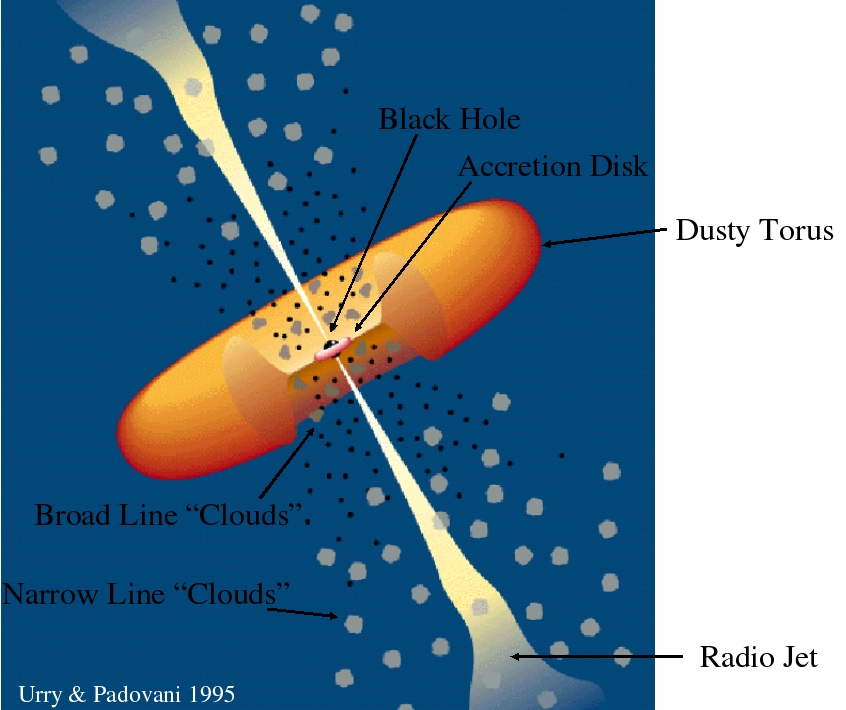Quasar Basics
Quasars are the brightest objects in the entire universe. But just what is a quasar, and how does it work? In the heart of every galaxy lies a central super-massive black hole. When galaxies interact with each other, gas and dust are often pushed towards the black hole forming an accretion disk of material. As this material falls towards the black hole it begins to accelerate and heats up, releasing enormous amounts of energy. A picture of the basic process is shown below.

The key is the galaxy interaction, driving more gas and dust towards the black hole, giving more material to accrete. Accretion is one of the most efficient means of radiating energy in the universe, far more efficient than fusion. This is why quasars are so bright- we are dealing with black holes that are millions or billions of times more massive than the sun and a huge amount of gas and dust accreting due to the interactions between galaxies. Because quasars are so bright, we see them from tremendous distances, the most distant objects found in the universe are quasars. The most distant quasar found to date is over 13 billion light years away. This is why quasars are such an important area of astronomy to study- they allow us to see far into the past of the universe.
The central black hole and accretion disk are surrounded by a huge dusty torus of material as shown in the picture above. This torus obscures our view if the quasar is not face on towards us. This has caused some issues in identifying quasars and there are several different classifications as they were originally thought to be different objects. The unified model attempts to explian the differences as merely a matter of orientation- the processes between the different classes are exactly the same, we are just looking at the quasar from a different angle and therefore dont see the same effects. The picture below shows the different frequencies of light that we are observing when looking at a quasar, and shows how a different orientation can change what we observe here on earth.
